4 Tips for Communicating Data for Impact
After you’ve worked hard collecting a rich repository community health data, it can be tempting to declare victory—but the work isn’t over yet! One of the key findings from the DASH environmental scan, a snapshot multi-sector data sharing projects around the country, is that raw data in itself is not useful to stakeholders. In order to make data valuable and actionable, it must be turned into meaningful information.
How can data be presented in a way that resonates with key audiences and leads to action to improve community health? At the Do Good Data Conference and National Network of Public Health Institutes Conference, the DASH National Program Office team attended sessions led by data storytelling experts working to answer this very question. Below are the four most salient pieces of advice they shared.
1. Provide the right audience with the right amount of data in the right format.
Researchers, policymakers, the media, potential funders, and consumers all use data differently. In order to increase the likelihood that your target audience will pay attention to your data, consider how they think about data, find it, and use it.
Decisions about how much data to present in what format greatly influence how the information impacts the end user. Brian Pagels, Vice President of ForumOne, shared a framework for communicating data, which identifies different types of data consumers and outlines tools that are most effective for sharing data with each audience. Audiences may include casual users who are interested in the topic, policy and decision makers, analysts with more extensive data knowledge, or researchers who work in the trenches collecting and analyzing data.
2. Be strategic and have a plan for how you will deliver data-driven stories.
You don’t have to have a large organization or budget to tell data-driven stories effectively—as long as you are strategic about gathering, exploring, visualizing, and contextualizing your data. Lian Chang, Data Visualization Designer at Earnest, shared a simple eight-step process for developing and disseminating data-driven stories.
Media Tracking: Know what kind of stories are already out there on your topic.
Idea Generation: Brainstorm ideas and define a fresh angle for your story.
Data Exploration: Create a schema of which pieces of data you’re pulling from different sources.
Data Cleaning: Look at the data to identify what’s most relevant.
Data Visualization: Create exploratory visualizations, and then refine the data to make the design simple and clear.
Analysis/Writing: Figure out what makes a shareable story and write an editorial brief outlining the key takeaways.
Pitching: Find reporters and bloggers who have written stories on your topic and email them with a cold pitch.
Social Sharing: Share your story on your organization’s website/blog and social media channels.
3. Use personal narratives to bring insights from the data to life.
While graphs and maps can be helpful in conveying data, including personal stories from people in the community can go a long way in bringing your key messages home.
Kate Capossela, Vice President at GreatNonprofits, shared an example of the importance of supplementing data with personal narratives. When the Santa Clara Latino Voices Health Project conducted a survey on diabetes in their community, the results showed excessive soda consumption. Through qualitative interviews with participants, they found that several of the people who indicated they didn’t drink soda but were actually consuming drinks with even more sugar without realizing it, like Adriana—a Mexican American mother living in L.A. who avoided soda but was surprised to learn that horchata also contained a high amount of sugar. These stories helped put a face to the data and provided more context for the findings.
Laura Saponara, Communications Strategist at the Public Health Institute, also emphasized the importance of personal narratives in helping people retain data findings, explaining:
“Humans remember stories and anecdotes better than we remember data…Engaging with strangers is the antidote to antipathy and apathy.”
Saponara shared a storytelling tool called HealthData+, an online platform that combines data with storytelling elements to help inspire action and improve health.
4. Create calls-to-action that spring from the data you’re presenting.
Andy Krackov, Vice President of Partnership and Strategies at LiveStories, stressed the importance of providing a clear, simple action that people can take in response to the data you share. Whether you want people to email their elected officials, sign up for alerts, or participate in a prevention program, make sure the next step is clear so that you can inspire users to take action and make a greater impact.
